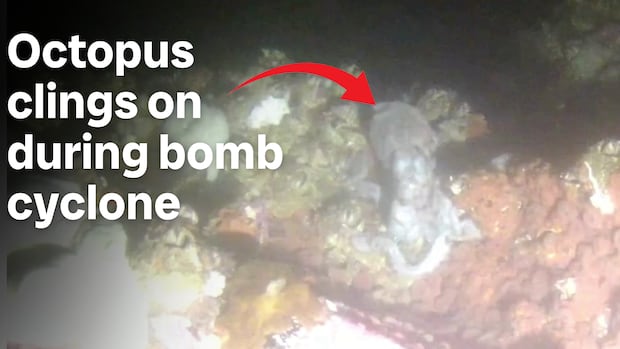Another storm approaches Vancouver Island as crews finish restoring power to thousands
B.C. Hydro says new storm could hamper cleanup

A new storm is approaching Vancouver Island just as residents finish recovering from a "bomb cyclone" that began battering the region late Tuesday.
At the peak of the storm, as many as 300,000 B.C. Hydro customers were without power, more than half of them on Vancouver Island, as gusts of wind of up to 170 km/h were recorded just off the island's north coast, and hurricane-force gusts brought down trees and damaged infrastructure across the B.C. coast.
Environment Canada is warning of another storm approaching southwestern British Columbia and issued a fresh round of weather statements for Friday covering Vancouver Island, the Sunshine and Central coasts, and Howe Sound with predicted winds of up to 90 km/h.
While less intense than the previous storm, officials say the incoming system still has the potential to cause damage and disruption and slow down cleanup efforts.
Power still out in some areas
By Thursday morning, B.C. Hydro said it had restored power to more than 90 per cent of customers affected, but more than 15,000 were still without power as of 6 p.m. PT with the power provider warning that some areas with "significant damage" may still face another night in the dark.
B.C. Hydro spokesperson Kevin Aquino-Bravo said storm damage was making it difficult for crews to reach all affected areas.
"Crews have been working around the clock to restore power," he said. "But there is some heavy debris on roads and highways and that definitely impacts our access into certain areas."
Aquino-Bravo said the utility had deployed crews to the north of Vancouver Island ahead of the storm to ensure crews could reach the area before ferries were cancelled.
The areas hardest hit by the storm include Nanaimo, Victoria and Qualicum Beach, he said.
Next incoming storm
Environment Canada says an area of low pressure will deepen off the coast of Washington state Thursday evening before moving north, causing southeasterly winds to increase through Friday on Vancouver Island and the B.C. coast.
Winds are expected to reach a peak Friday afternoon and evening.
The forecaster also issued a wind warning early Thursday for southern Howe Sound and Bowen Island, saying outflow winds will pick up overnight and peak Friday morning with gusts up to 90 km/h.
It says further damage, power outages and falling trees may occur and warns drivers could see dangerous driving conditions on highways due to strong cross winds.
Meanwhile, snowfall warnings were issued in the province's southeast, where as much as 25 centimetres is expected in the areas around Creston and Fernie by the late Thursday morning.

More snow in the region is expected on Friday and into the weekend, forecasters say.
It's the latest in a string of powerful fall storms, including an atmospheric river weather system in mid-October that caused flash flooding and dumped almost 300 millimetres of rain on parts of the province.
Armel Castellan, a warning preparedness meteorologist with Environment Canada, says the series of storms is a product of a sustained upper trough of low-pressure high in the atmosphere.
He says that while such a pattern is "pretty typical" at this time of year, it doesn't always last so long.
"We are dealing with an overall upper trough pattern offshore in the last two months, since mid to late September, and so that's been a persistent stormy pattern if you will," Castellan said, adding that "sometimes we deal with it in days or a week, maybe two weeks."
Castellan said that when an upper trough lasts two months or more, "it starts to become a fairly long-ingrained pattern, and then it starts to become a little bit long for the environment to handle."
He said that was the case in 2021 when a trough of low pressure from September to early December was marked by two bomb cyclones, a tornado in Vancouver and devastating flooding caused by an atmospheric river that inundated the Sumas Prairie.
"It does bring us to more susceptibility because the soils are more saturated [and] yet another storm can become devastating. But in and of itself, we do see active periods of stormy pattern with an upper trough fairly often."
Castellan said B.C. residents could expect some relief from "more of a cool and dry" weather pattern this weekend, "a stark change" from the weather over the past few days.
With files from the Canadian Press



